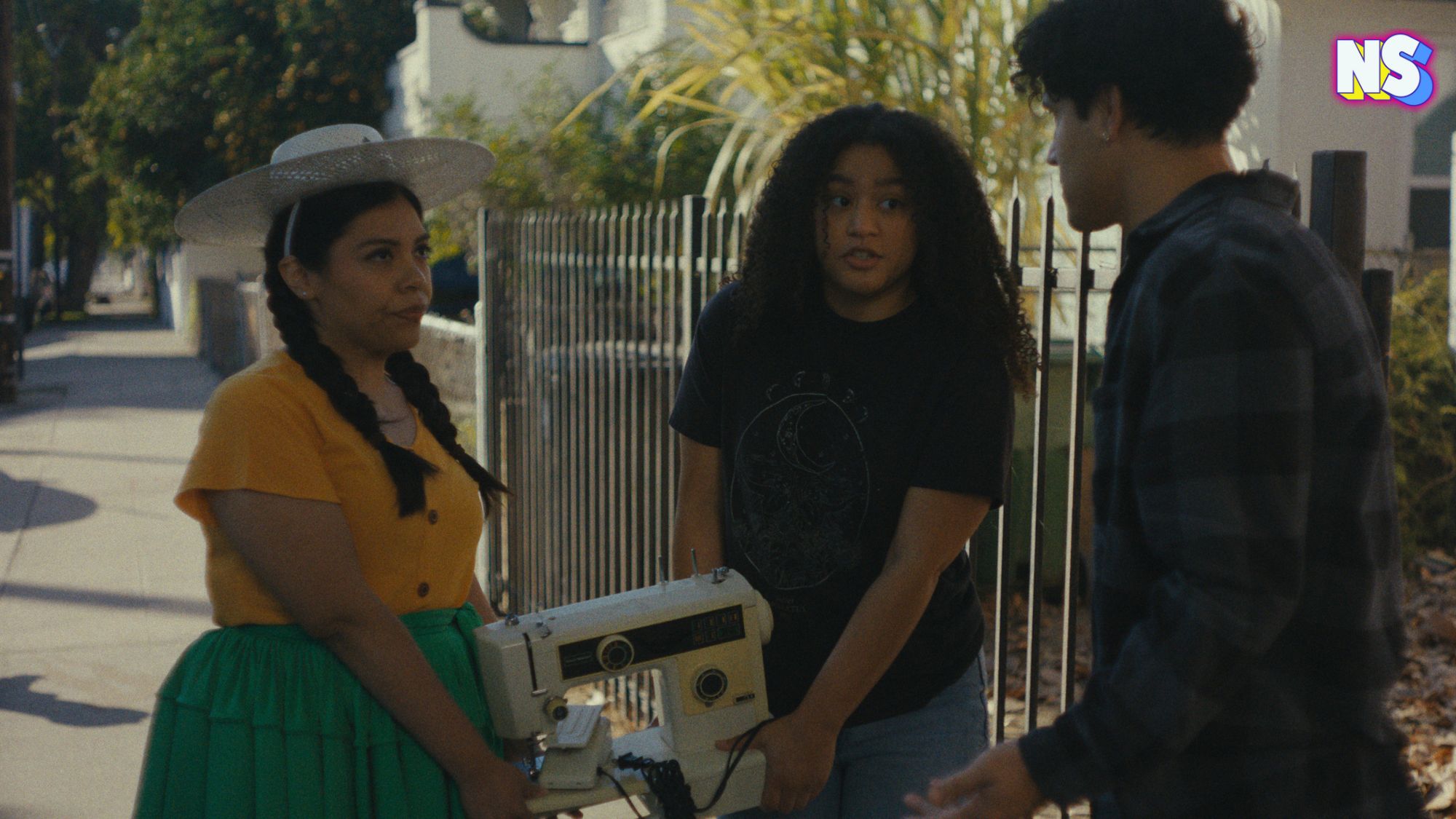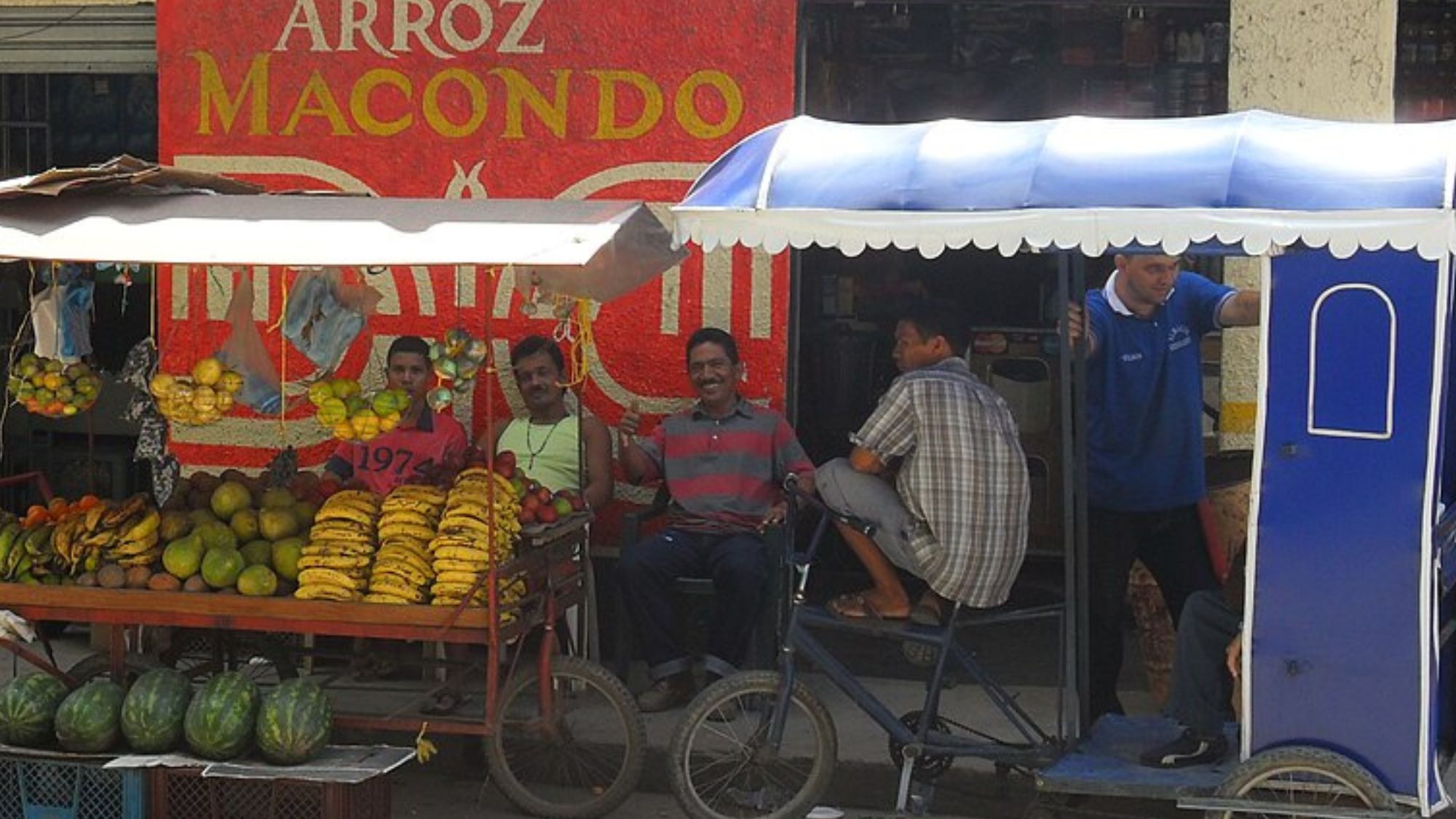Cali, the most populous city in southwest Colombia, is often celebrated as the “capital of salsa,” and it didn’t take me long in the city to understand why. Music pours out of shops, houses and buses, and caleños, people from Cali, spontaneously sway to its infectious rhythms wherever they may be.
Colombia’s third largest city is dotted with countless dance clubs, academies and music groups that are dedicated to salsa and keeping its vibrant traditions alive.
But more than just music or dance, salsa in Cali is a way of life. Yet salsa doesn’t originally come from Cali or even Colombia, and the style of salsa caleña is a little different to what you might find in other places.
So what is salsa caleña and how did Cali become world famous for its music and dancing?
‘A dance with a flirtatious essence’
Salsa has many varieties, among them the Cuban, Los Angeles and New York styles, that vary in their rhythms and movement. Salsa caleña, the version danced in Colombia, has extremely fast and intricate footwork, the top half of the body stays rigid, with most of the movement occurring in the hips and the legs. The music is played at a quicker tempo too – around 45rpm, rather than the more traditional 33rpm.
Colombia’s tourist board describes salsa caleña as: “A dance with a flirtatious essence where the movement from the waist down, the playfulness of the hands and eyes, the man’s lead of the woman, jumps and tricks, turns and passion, define the caleño dance”.
The origins of salsa actually lie in Cuba and the ‘Cuban son’ – a traditional Cuban music style that wove together elements of Spanish guitar music with African percussion. This rhythmic and melodic base came to have a large influence on the salsa that would later evolve and bring in elements from other Caribbean musical styles, such as mambo, cha-cha-cha guaracha, and rumba.
During the 1940s and 50s this music started to become more popular outside of the Caribbean. New York City quickly became a hub for salsa, due to migration there, and the influx of Cuban and Puerto Rican immigrants. The Caribbean and Latin sounds adopted elements of jazz and other styles too.
“Salsa isn’t a rhythm nor a genre, but a mix of these,” according to musician and salsa dancer Milton Casas, who is also director of the Museo Pioneros de la Salsa Caleña, Cali.
“If you take the idea of a salsa you eat, you mix ingredients. To make a salsa to dance to, you mix rhythms. Salsa is this mix of rhythms.”
Radio, cinema and a train line propelling the rise of salsa in Colombia
While salsa was evolving and adapting its styles, Cuban and Caribbean music had already started embedding itself in Colombia. Cuban, as well as other Caribbean, sounds and rhythms penetrating the airwaves in the 1930s and 40s. Live orchestras would play Cuban son, boleros, rumbas and guarachas on the radio. Cinema too soon became popular in the 50s – and often included Mexican actors dancing to this Cuban music, which became a reference for how to dance different steps.
Merchant sailors would bring records into Colombia from the US via port cities like Buenaventura and Cartagena. Although popular across the country, it was Cali where it really took hold and it was one particular neighborhood known as Barrio Obrero that propelled the music boom.
“The train came from Buenaventura, which is the biggest port in Colombia, and where goods would enter. It stopped in Barrio Obrero and that’s where the commercialization of records and vinyl began,” Casas explained. “It became the epicenter of salsa music.”
Bands in the neighborhood formed, such as the Sonora Juventud, made up of the Cordoba cousins, who started to play the music coming in from outside – but adding their own style too.
RELATED POST: Colombia’s Arepas: the Snack That Sums up National Culture and Pride
In the 60s and 70s, dance halls sprung up in the neighborhood – and across Cali. Musicians in Cali began adapting it and infusing it with their own styles, incorporating Colombian styles like cumbia and vallenato. DJs in clubs would take salsa records and speed them up, with dancers competing to see who could dance the tricky steps the quickest.
A distinct style of salsa – salsa caleña – started to grow and become addictively popular.
Salsa as the fabric of the city
While the various styles and rhythms and steps that contributed to salsa were once seen as just for the working class neighborhoods, that started to change. “Now, rich people, poor people, everybody dances it. No matter your creed, ideology, gender or partisanship,” Mr. Caicedo told the New York Times.
Since 1974, the World Salsa Championship has been hosted annually in Cali. The city also annually holds the Cali Fair, a cultural event for residents and visitors, which is largely defined by salsa. In 2022, Colombia’s Ministry of Culture named it as ‘Intangible Cultural Patrimony of the Nation,’ hoping to eventually get it listed on UNESCO’s List of Intangible Cultural Heritage (ICH).
When salsa took off in Cali, it never really stopped. In other countries, popular styles like merengue and reggaeton overtook the popularity of salsa. But in Cali it has become so ingrained, that it would almost be impossible to untangle it from daily life.





